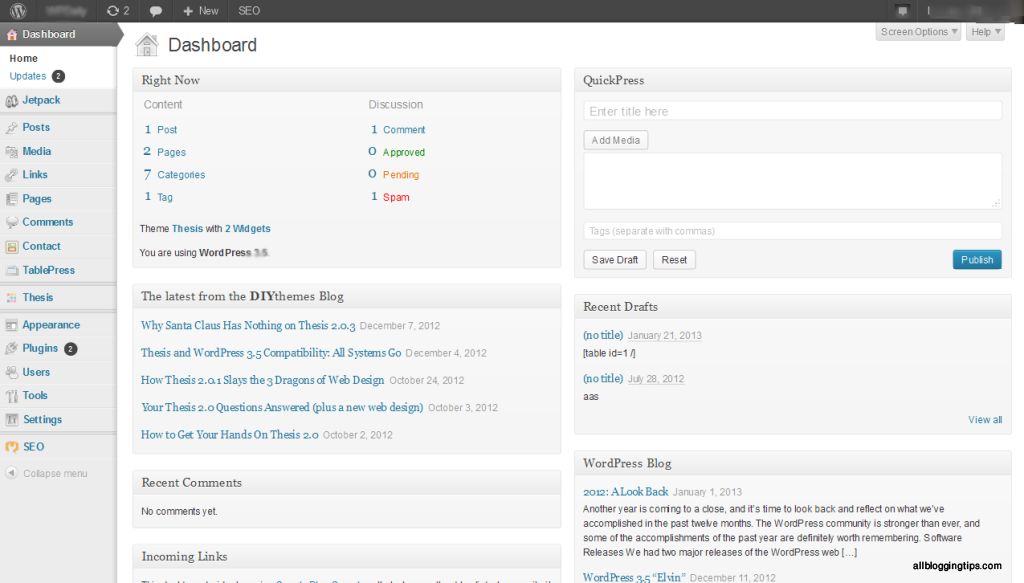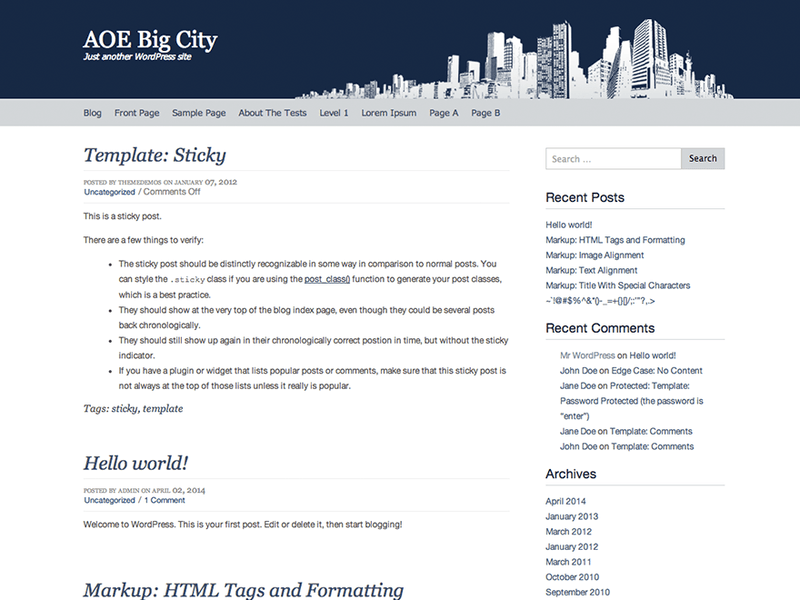

This is a subject that I am not a stranger to, and should be a top priority in my opinion. Some plugins put their import functionality under tools, others as a submenu within their own plugin…the user experience in the admin is jarred between plugins, just from a simple navigation standpoint. Not only that, but many plugin developers seem to have taken to putting their settings screens wherever they please, without much thought to usability.
QUICKPRESS WP THEME INSTALL
As soon as you install more than a handful of plugins, your sidebar begins to get unnecessarily bloated. It ought to be simpler (even encouraged) for developers to use these core pages instead of creating their own interfaces for minimal settings changes.Īmen. Shawn remarked upon a technical issue regarding just that:Ĭurrently, if I write a plugin that needs a minimal interface (one field needs to be added as an editable option somewhere), it’s far easier to create my own custom page to manage that single option than it is to hook into the “settings, general” page or other settings pages. But what really bothers me about the sidebar is the way in which plugin settings are integrated. Shawn suggested drag and drop ordering of menu items – that would be a godsend. New users sometimes miss either the Posts tab or the Pages tab, and sometimes they don’t understand that both of these exist, and that they are rather different.

The Media and Links appearing between Posts and Pages confuses quite some people. I have not been short of a rant or two in the past about how the sidebar can be improved or edited.ĭumitru Brinzan of WPZoom and Shawn K Hall of 12 Point Design both had similar ideas regarding the ability to rearrange the menu items in the sidebar. The sidebar used to be the one feature of the admin area that I felt needed the most attention (although my primary focus has now shifted to the various usability improvements that you can find later on in this article). “Publishing”, “WordPress News”, etc), and tagging widgets per user (so that different users could have different widgets on the same blog). Martin suggested grouping widgets by type (e.g.single widgets spanning the width of two or more columns). Shane suggested multi-column widgets (i.e.That certainly would make QuickPress more useful, although I am still dubious as to its true benefit (is clicking on “Add New Post” really that difficult?).īoth Shane and Martin had other ideas regarding dashboard widgets:
QUICKPRESS WP THEME FULL
Whilst I have always felt that the QuickPress widget is a waste of time, Martin Kuplens-Ewart from BraveNewCode suggested a simple improvement:Īdd a “Switch to full editor” button which takes whatever content has been added and populates it in the normal “Add New Post” interface. I would be interested to know if any of you use it. Shane from Modern Tribe questioned whether the QuickPress widget even gets used. Whilst getting rid of them is easy enough via the Screen Options tab, should some of them be there in the first place? Unless you go out of your way to clean up the dashboard, it will be full of an assortment of meta boxes. Let’s start with what any WordPress user first sees when they login to their site. The responses I got collectively represent a far better admin area for everyone – from beginners to pros.

I spoke to theme developers, plugin developers, and general WordPress enthusiasts. With that in mind, I thought I would ask some knowledgable minds what they would do to improve the WordPress admin area. And let’s face it, there is an awful lot going on – from a plethora of menu options, to an assortment of meta boxes. It was all rather overwhelming, wasn’t it? What is now so familiar was once alien and intimidating. Cast your mind back to when you were completely new to WordPress.


 0 kommentar(er)
0 kommentar(er)
